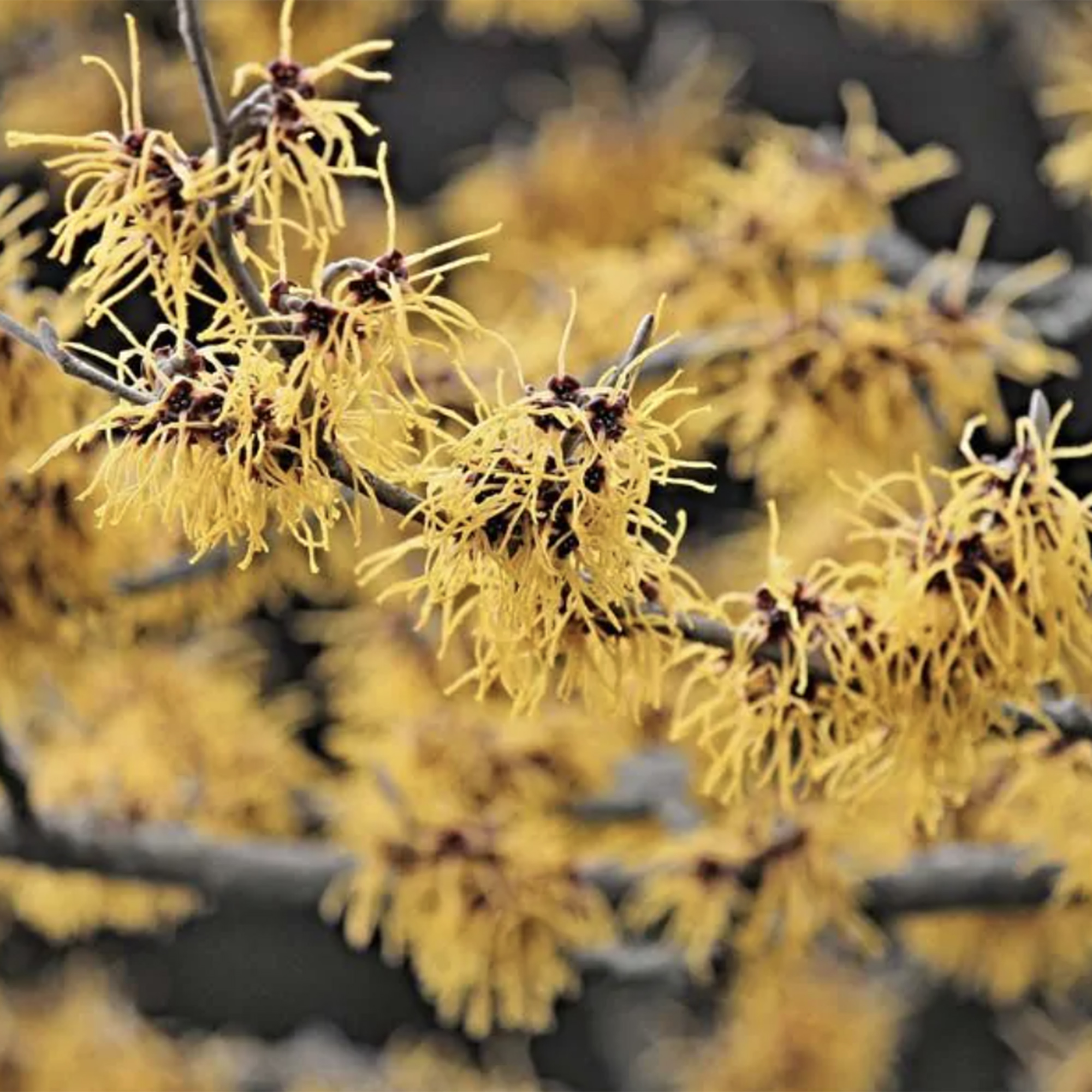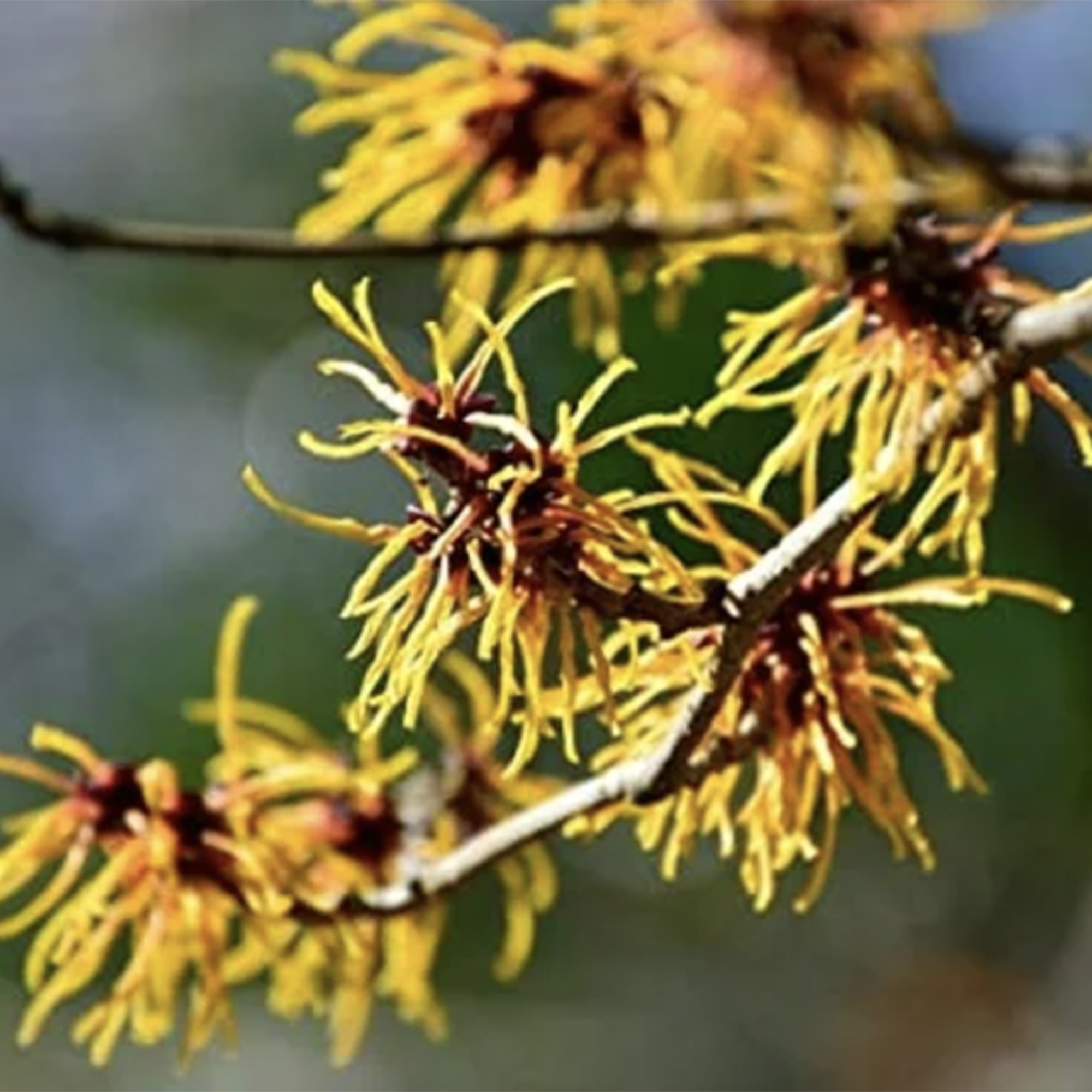Witch hazel plant care – how to grow this winter-flowering shrub in your backyard
It's hard to beat witch hazel for dazzling winter interest
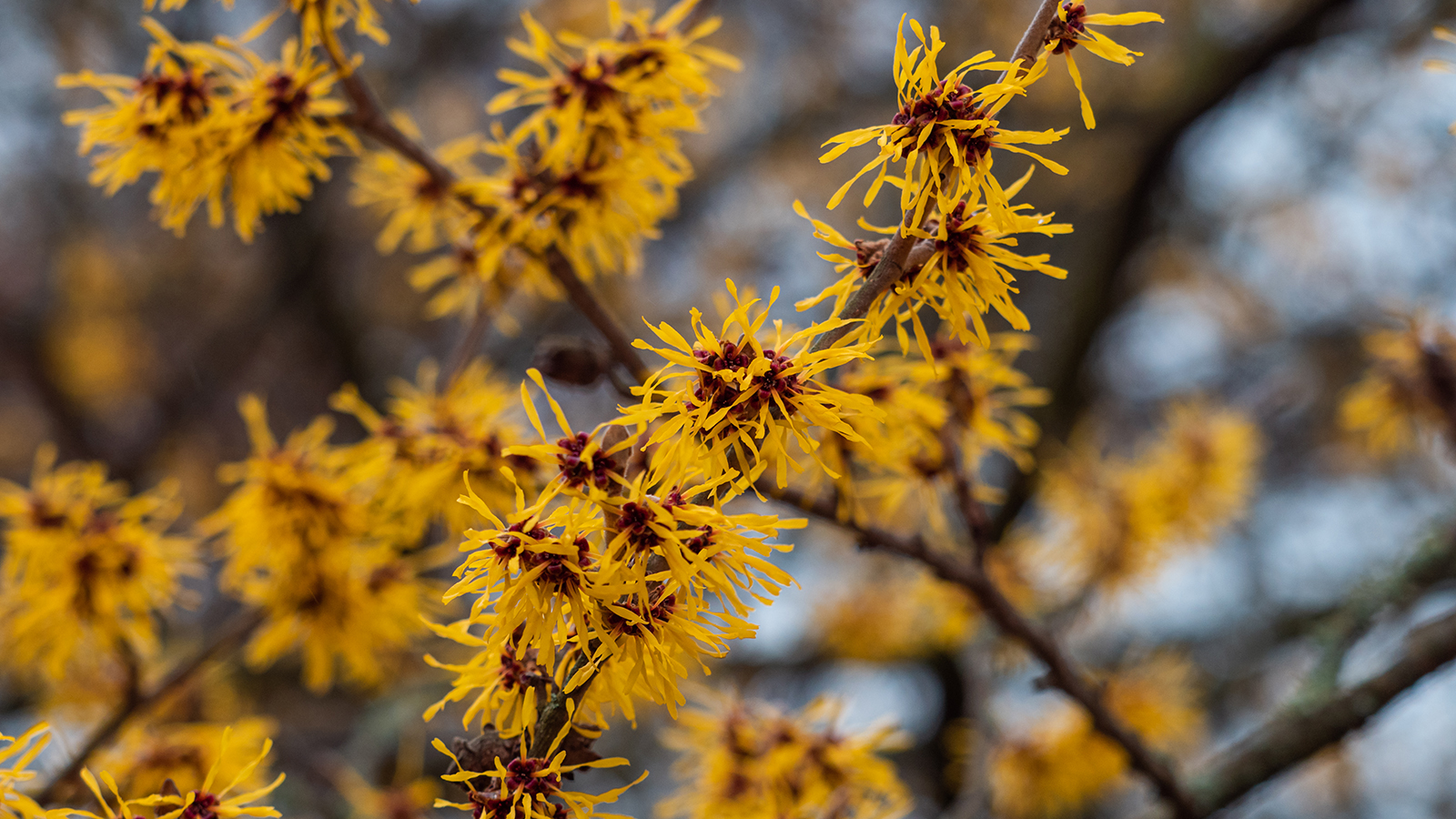

Witch hazel is one of the few shrubs that blossom in winter and early spring, when there's often very little color elsewhere to be seen. Its golden, orange, or sometimes reddish flowers are quite unusual, with slender, twisted petals that create a rather spidery look.
But it's not just the dazzling blooms that will catch your attention. Many varieties also offer a sweet scent that hangs in the air on still days, as well as deciduous leaves that turn buttery or fiery orange in fall, making them one of the best trees for fall color.
Witch hazels are low maintenance trees, which are also exceptionally winter hardy (to USDA zone 3), and are generally tolerant of a range of different conditions, which makes them easy to care for.
From Asia come two winter or spring flowering witch hazels – Hamamelis mollis and Hamamelis japonica. The hybrid between the two species, Hamamelis x intermedia, is also widely grown.
Although they are slow-growing at first, they are well worth the wait. Given space to develop, a witch hazel is an essential addition to your winter garden ideas.

Many witch hazels boast good autumn color and will complement winter stunners like dogwood
The secrets to successful witch hazel plants
Many nurseries and garden centers offer plants in containers. These are often in gallons or sometimes larger, two or three-gallon containers.
These can be expensive to ship but usually establish quickly after planting in the ground or growing witch hazel in pots. The pot may be removed for shipping, and the plant wrapped in a bag. Planting trees in large containers are also heavy to lift, so get help if you’re buying in person at a garden center or nursery and when unloading and planting at home.
Design expertise in your inbox – from inspiring decorating ideas and beautiful celebrity homes to practical gardening advice and shopping round-ups.
Where to plant witch hazel

Witch hazels flower well in bright spots – position them where a setting sun shines through the petals for a spectacular display
Witch hazels prefer soil types that are acid or neutral. They thrive less well in limey conditions, although improving limey soil with composted bark can be beneficial.
Good drainage is also helpful, as they do not like waterlogged soil. Flowering will be most prolific in full sun, although not if the soil is dry. Dappled shade is often the best compromise.
A site protected from harsh winter wind is also ideal, as the shelter can help concentrate the fragrance as it hangs in the air. For that reason, consider planting your witch hazel near a garden wall or fence. But, ensure there is still plenty of space around it so it can grow into a naturally elegant specimen.
It's also a good idea to grow plants that are dispensable around it – ones that can be pruned or removed, or those that will gradually fade away as the witch hazel develops.
When to plant witch hazel

Plant any time between fall and early spring
Witch hazels grown in tubes or containers can be planted at any time from late fall to early spring when the ground is not frozen or waterlogged. If conditions are not suitable, keep the plants in a cozy corner until the situation improves.
Witch hazel is also one of the best trees to grow in pots, and if you're going for this approach, you can plant it at any time. Just ensure you provide plenty of water to keep the soil moist if you're planting it during the spring or summer.
Bare root plants are best planted as soon as possible after you receive them but, again, if the ground is frozen, wait until conditions improve.
Shop witch hazel plants
How to plant witch hazel
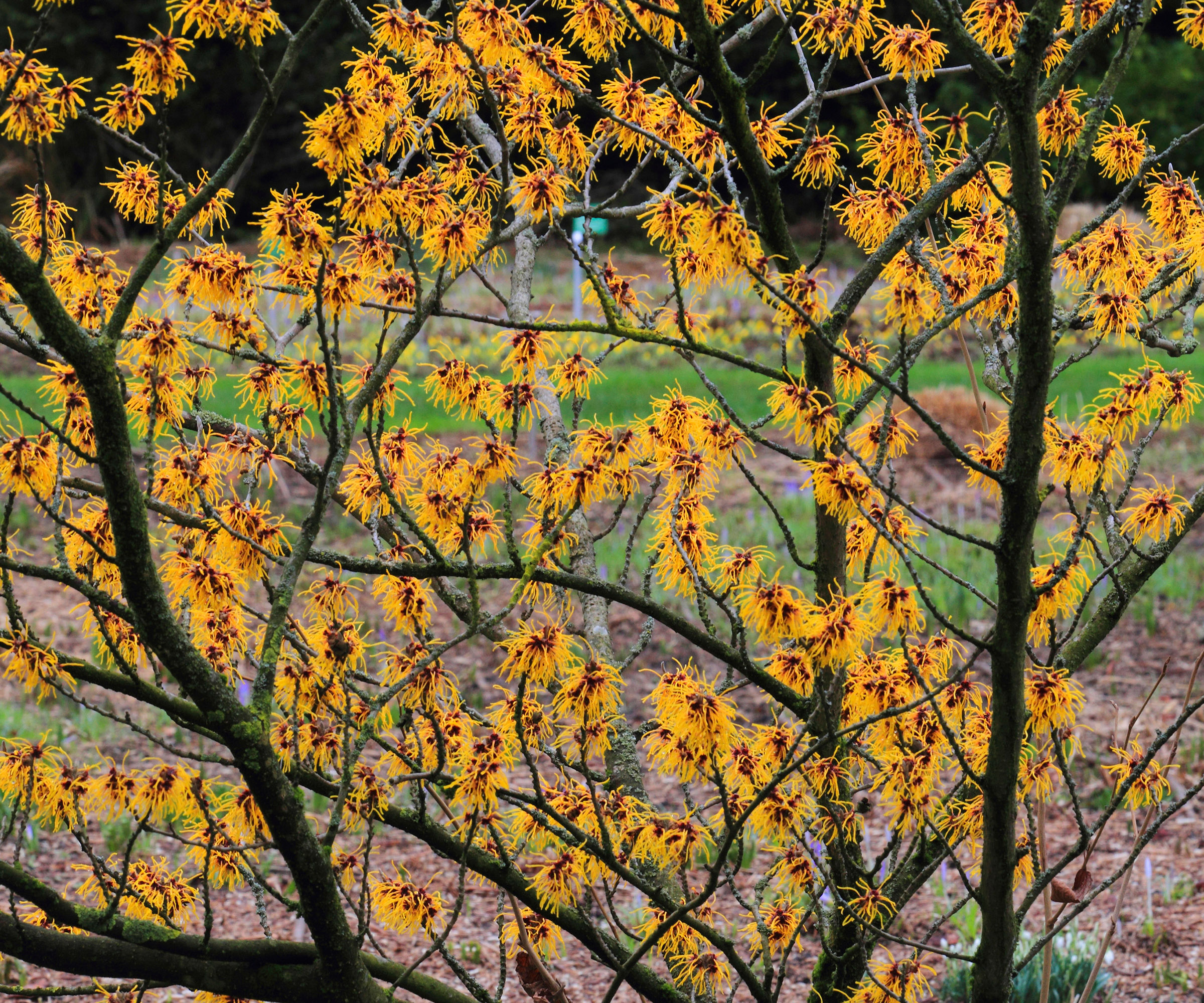
Mulch witch hazels after planting them
Witch hazel plants need no special planting method. However, a top tip to remember is that they are not deep rooting. So, rather than preparing a deep planting hole, dig plenty of organic matter into a wider area, about a square yard. The hole itself should not be much deeper than the depth of the plant's container.
After watering in, mulch with weed-free compost or soil conditioner. Be sure to choose an acid material for this – composted bark for example – rather than a limey one such as mushroom compost. A common tree mistake is to not check your soil pH before you plant a tree.
How to care for witch hazel
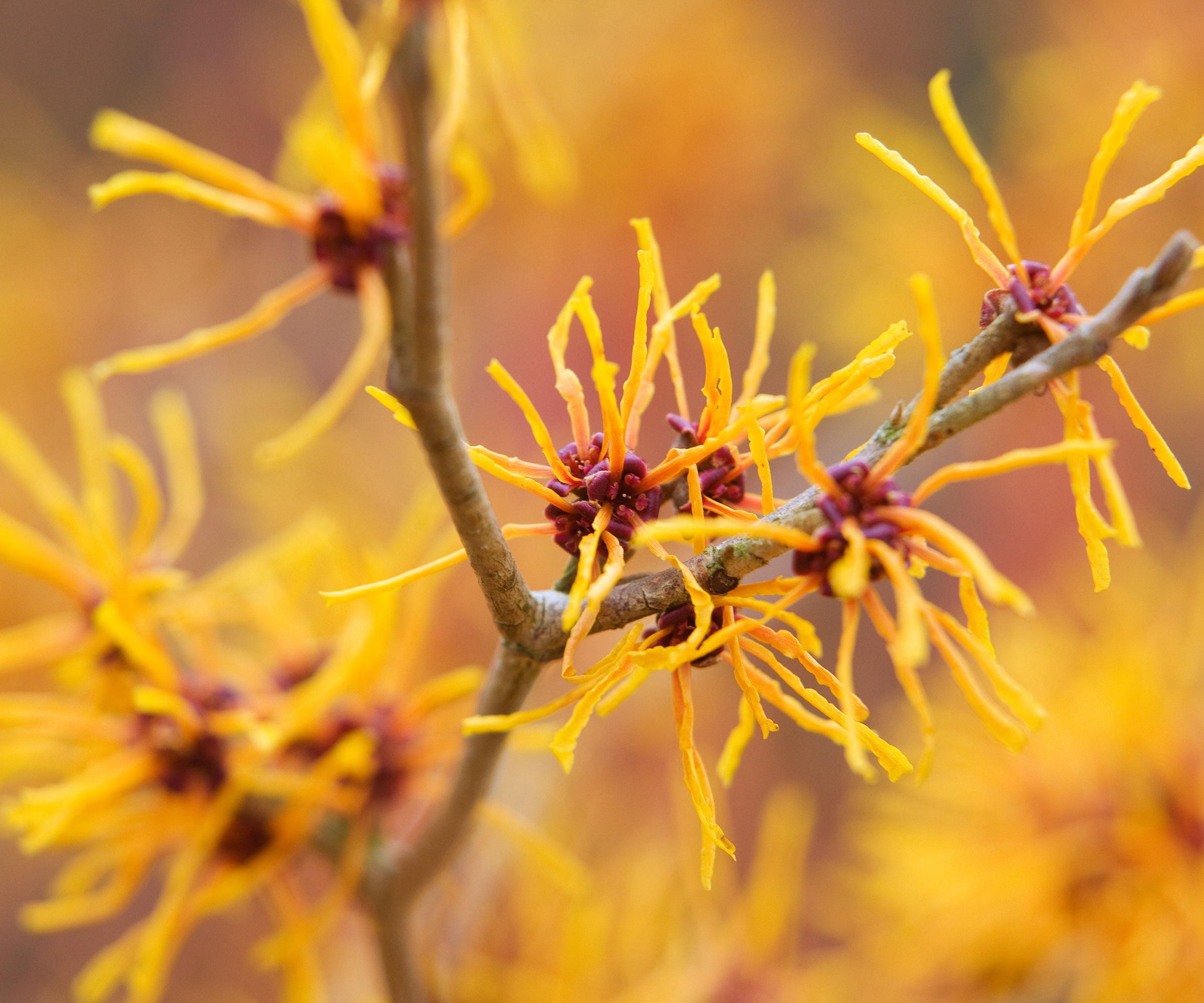
Water witch hazel during dry spells
If you're a fan of low maintenance garden border ideas, you'll be pleased to know that witch hazel plant care isn't tricky. In fact, they need little special treatment. What's more, pests and diseases are rarely a problem.
Applying rhododendron fertilizer in the fall, followed by weed-free mulching, will help keep them growing well and suppress weeds. In hot, dry summers, witch hazels will definitely appreciate watering but they don't need wet soil.
FAQs
Why isn't my witch hazel scented?
If you're after a scented winter flowering shrub, it's all a question of choosing the right variety. Some witch hazels are strongly fragranced and some have very little scent.
Top choices include 'Aphrodite' (which is orange), 'Arnold Promise' and 'Pallida' (both of which are pale yellow), 'Aurora' (bronzed yellow), or 'Vesna' (orange-yellow).
Are witch hazels native to the US?
There is a North American native witch hazel, otherwise known as Hamamelis virginiana. Unlike the Asian witch hazel, it is a fall-flowering species. It grows in forest clearings and margins, in thin woodland and along shady highways across the east, from Quebec south to Texas and Florida.
The American witch hazel has fragrant yellow flowers. Although the blooms are smaller than the Asian witch hazel, it still has a delightfully sweet scent.
The Ozark witch hazel (Hamamelis vernalis), is another very small-flowered but heavily scented species, found in Missouri and Arkansas. This rare specimen has orange or yellow flowers that bloom in spring.
Now you know how to grow witch hazel, and just how simple it really is, you may well want one to add to your own backyard when you're planning a winter garden.

Graham Rice is a garden writer who has won awards for his work online, and in books and magazines, on both sides of the Atlantic. He is a member of a number of Royal Horticultural Society committees and the recipient of the 2021 Garden Media Guild Lifetime Achievement Award. He gardened in Pennsylvania for 20 years, but has recently returned to his native England.

